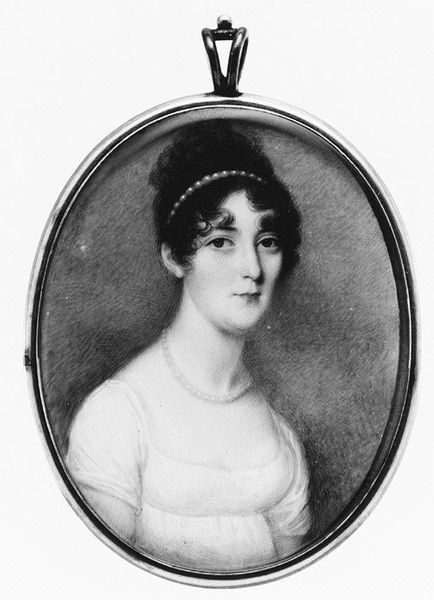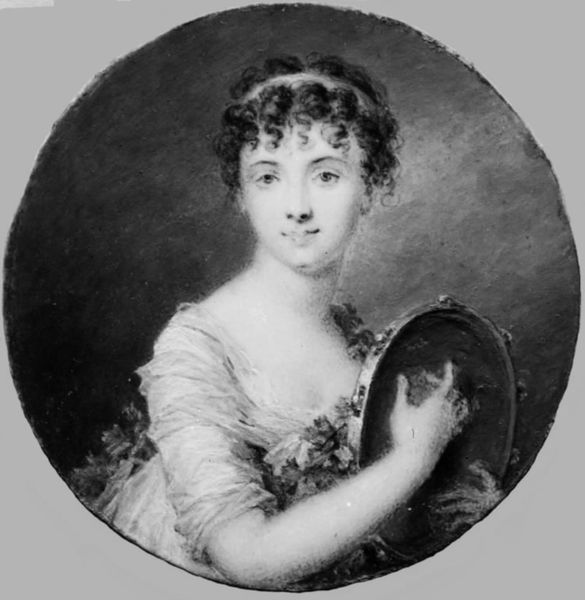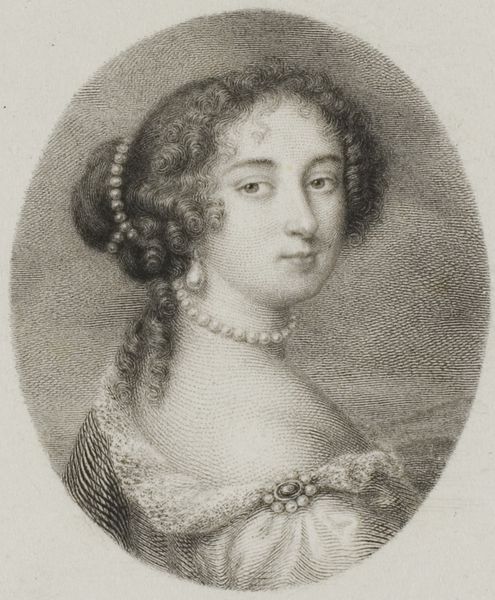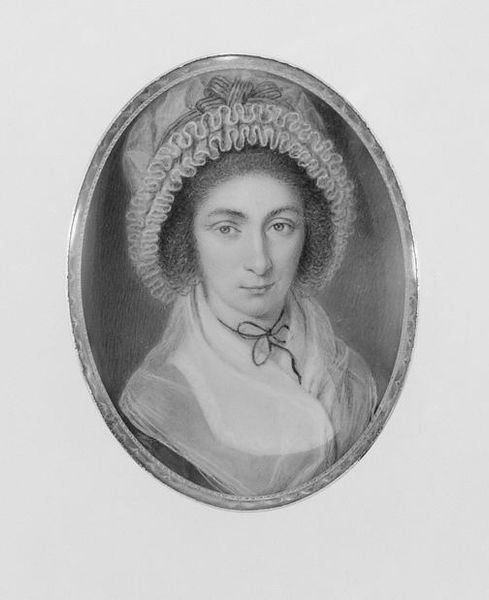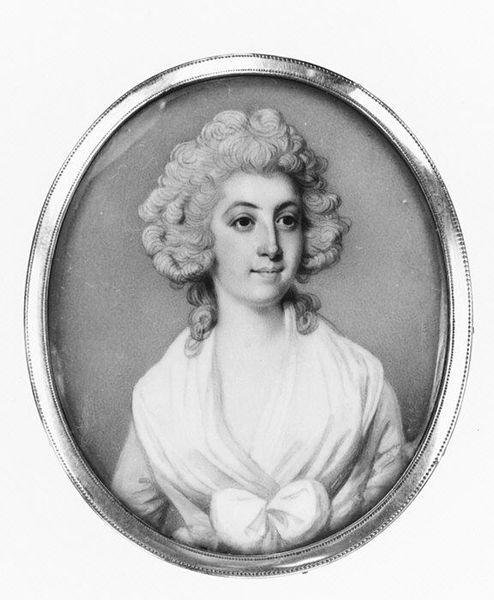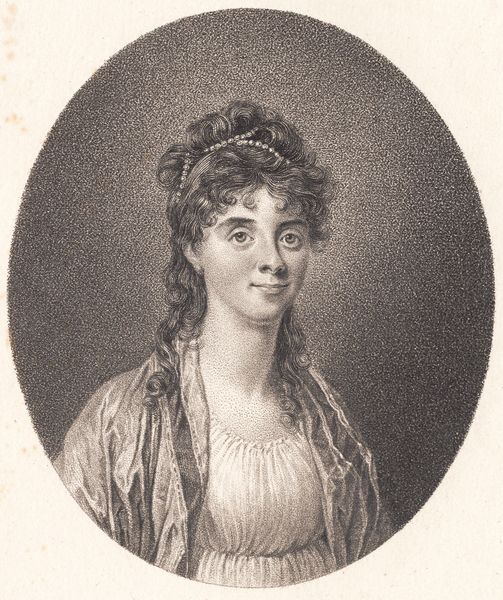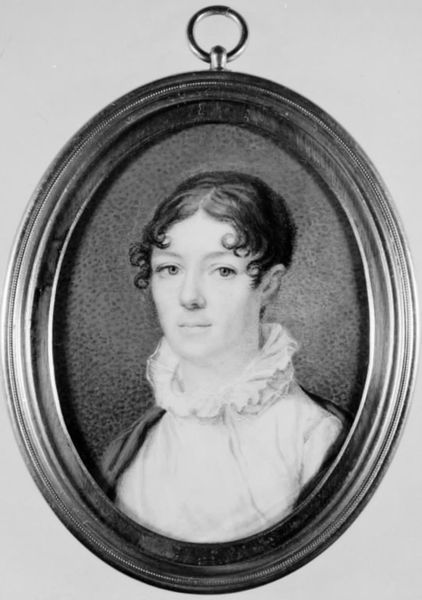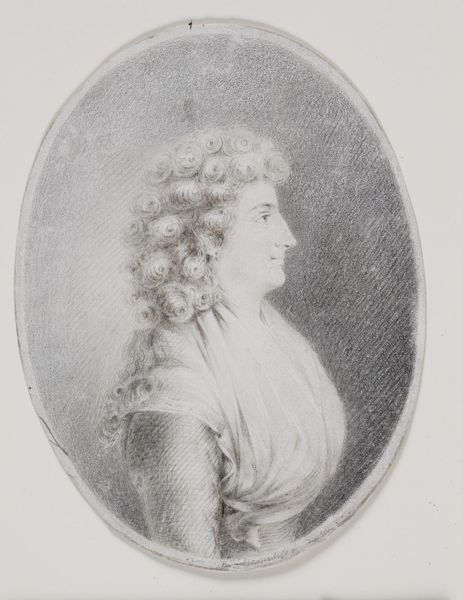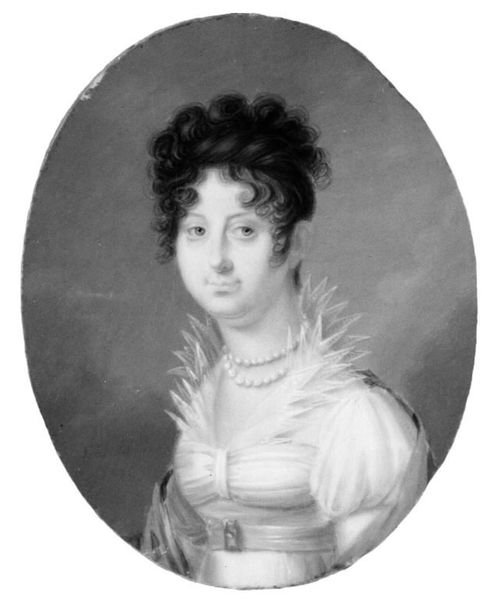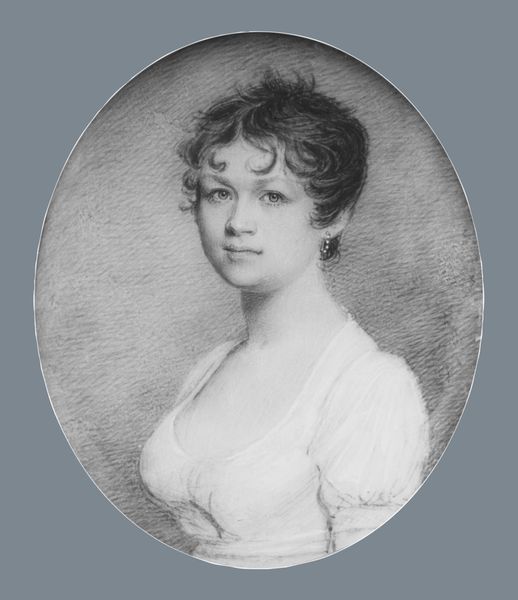
Portrait of a Woman, Said to Be Madame Récamier (1777–1849) 1812 - 1814
0:00
0:00
drawing, pencil
#
portrait
#
drawing
#
neoclacissism
#
pencil
#
academic-art
#
miniature
Dimensions: Oval, 2 3/8 x 1 7/8 in. (60 x 48 mm)
Copyright: Public Domain
Curator: This miniature drawing is attributed to Nicolas François Dun. Believed to be a portrait of Madame Récamier, it was crafted between 1812 and 1814. Notice the fine pencil work. Editor: It’s contained elegance. The details, especially the ruffles and bonnet, speak to me of constraint and the trappings of bourgeois identity, even vanity. It’s all framed in such a way as to elevate this person to some special status, isn't it? Curator: The framing and scale point directly to the economic circumstances of both the artist and sitter. Pencil drawings allowed for relative ease of execution but still offered prestige compared to something printed. Dun's academic training and mastery of the medium are evident, demonstrating value for both client and artist in the 19th century market of portraits. The object becomes a jewel and the lady, a gemstone. Editor: Exactly! She is like an idealized figure from neoclassical lore. A calm Madonna in a gilded reliquary. Do you feel a slight tension between that overt serenity and the fact that her image is miniaturized—objectified—for, presumably, a man? Curator: The neoclassical aesthetic was certainly about control. Remember how the era reveled in representations of historical figures? It's easy to see Dun responding to the popular trends. This object speaks of empire, class and the means of producing likeness. There are so many steps to realize it: Pencil to paper, frame, gemstones, each component is handled with specialized, very gendered, expertise and labor. The history of art in objects! Editor: Right. These materials were never simply present. They were extracted, traded, owned… Her demure pose is part of the game too; she's performing the role assigned to her by society. The symbols, though subtle, reinforce the entire system. Even the artist's signature there… Curator: Yes. A stamp, quite literally, on his effort. What is more fascinating is how little changes across history, how some tools are swapped but many processes endure when thinking about materials. Editor: An era comes sharply into focus when viewing a thing so precisely rendered. Thanks for your insights. Curator: It's all in seeing and feeling the object's making in its moment, a slice of economic life materialized.
Comments
No comments
Be the first to comment and join the conversation on the ultimate creative platform.

